Matador Network's Blog, page 845
June 4, 2020
Russia Arctic oil spill

A massive oil spill in Russia has prompted Vladimir Putin to declare a state of emergency, as 20,000 tons of diesel oil leaked into an Arctic river this weekend. The spill occurred when a fuel tank near Norilsk, a city in Siberia, collapsed on Friday. Officials reportedly only learned about the incident on Sunday, and the Russian Investigative Committee (SK) has launched a criminal case over the pollution and negligence. Vyacheslav Starostin, the power plant’s director, has already been taken into custody.
According to Yevgeny Zinichev, the Russian Minister for Emergencies, the Norilsk Nickel plant spent two days trying to contain the spill before alerting the ministry. The spilled oil leaked 7.5 miles from the accident site, turning lengthy sections of the Ambarnaya river a crimson red. So far, the spill has contaminated an area of 135 square miles.
View this post on InstagramA post shared by Илья (@ilya_torgonskyi) on Jun 3, 2020 at 3:48am PDT
In a TV interview, Putin criticized the head of Norilsk Nickel, Sergei Lipin, over his response to the disaster. “Why did government agencies only find out about this two days after the fact?” he said. “Are we going to learn about emergency situations from social media?”
Indeed, the region’s governor Alexander Uss allegedly only learned about the incident when he saw it on social media.
The declared state of emergency means extra forces will be sent to the area to assist with containment and clean-up. Greenpeace has compared the spill to the Exxon Valdez disaster in Alaska, and experts believe the size of the spill will make it difficult to clean up. 
More like this Art + Architecture The story behind dachas, Russia’s storybook country cottages
The post Russia declares state of emergency over 20,000 tons of oil spilled into Arctic river appeared first on Matador Network.

Asteroid to zoom past Earth

Human civilization could probably use a reset button right now, but in typical 2020 fashion, we just can’t catch a break. An Empire State Building-sized asteroid is projected to fly past Earth on June 6, but it will not be striking our planet and wiping out humanity as we know it. That’s right. We’ll still be alive and kicking on June 7, and so will the global pandemic, social injustice, and all our other issues.
Asteroid 2002 NN4 — as it’s affectionately called by NASA — is an estimated 820-1,870 feet in diameter and is expected to pass a safe distance from Earth. NASA is continuing to monitor the asteroid, but if you don’t trust the professionals, you can track it yourself using this widget designed for stargazers.
It might seem like we have close brushes with asteroids all too often and that one is bound to hit us eventually. After all, there are approximately 20,000 near-Earth asteroids, so it certainly sounds like we’re overdue for a hit. However, the chances of a serious asteroid collision is incredibly small.
At a 2019 conference, scientists discussed what would happen if an asteroid was actually on a collision course with Earth. “All we have to do is change its speed a little faster or a little slower,” said Dr. Lori Glaze, director of planetary science at NASA, “so that when it crosses Earth’s orbit, it crosses either in front of us or behind us. It doesn’t really keep me up at night.” 
More like this Galleries These images from NASA will rock your world
The post An asteroid as big as the Empire State Building will fly past Earth this weekend appeared first on Matador Network.

Dominican Republic reopening in July
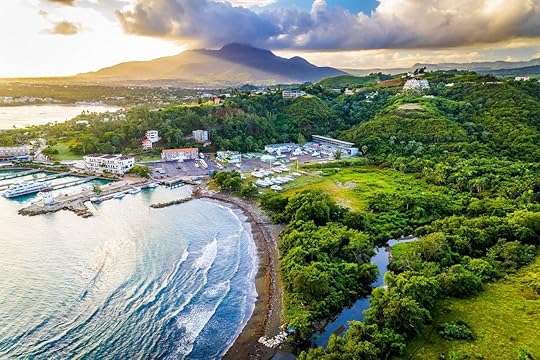
In an effort to keep up with other Caribbean islands reopening this summer, the Dominican Republic has confirmed that its tourism industry will resume on July 1. This means the return of international flights, and restaurant and hotel reopenings.
According to Dominican Today, the Dominican Republic’s reopening plan consists of four phases. The first, which began on May 20, allowed up to 50 percent of staff to return to work for small companies. Barbershops and medical offices were also allowed to open. In phase two, which began June 3, more staff were allowed to return to work at larger companies, and shopping centers, private passenger transport, and Sunday religious services resumed.
Phase three, which will begin on June 17, allows between 75 and 100 percent of employees to return to work, with religious services permitted three times per week. Phase four, which is slated for July 1, allows all companies to resume work with 100 percent of their staff and includes the opening of the tourism sector. Hotels, airports, restaurant dining rooms, and gyms will all be allowed to open.
The Dominican Republic is likely hoping to keep up with other islands, like St. Lucia, Aruba, Antigua, which have all announced their intention to open on or before July 1.
More like this Trip Planning Skip Punta Cana for the real Dominican Republic in El Limón
The post The Dominican Republic will open to tourists on July 1 appeared first on Matador Network.

General Lee statue removed Richmond

The George Floyd protests are causing everyone around the country to admit to the widespread racism and discrimination across the United States, and this reevaluation includes taking a good look at racist symbols sprinkled around the nation and making decisions about them.
In Richmond, Virginia, a statue of Confederate General Robert E. Lee will be removed from its central, visible location on Monument Avenue and placed in storage. Richmond’s Monument Avenue is lined with several homages to Confederate generals.
Over the weekend, protesters congregated around the statue of General Robert E. Lee and covered it in graffitis. Last night, an image of George Floyd’s face was projected onto the monument in a gesture meant to show that attitudes towards Black people have not changed very little in the United States — oppression is still front and center.
Talk about a picture. This is what the Robert E. Lee Monument looks like tonight. That is George Floyd’s picture being projected. @NBC12
Campaign to defund the police

The murder of George Floyd at the hand of a white police officer on May 25 has sparked more than just protests and calls for shifting racial relations. It’s also prompting a movement to defund law enforcement across the US. For several years activists have been advocating for US cities and states to cut police budgets, and although such demands previously gained little traction, recent events have drawn more mainstream attention to the issue.
Julia Salazar, a New York state senator, told The Guardian, “To see legislators who aren’t even necessarily on the left supporting at least a significant decrease in New York police department [NYPD] funding is really very encouraging. It feels a little bit surreal.”
The video footage of Floyd’s killing, coupled with visuals of militarized police responding with excessive force to peaceful protests, is leading to serious conversations about police budgets. And since this issue is arising in the middle of a pandemic, when communities are already economically strapped, people are wondering if tax dollars might be better spent elsewhere.
Some local leaders have already proposed cuts to police funding. The Minneapolis school board just voted to end its contract with the police department to remove the police presence from community schools. Tony Williams, a member of the MPD150 abolition group advocating against police in schools, said, “This is unprecedented in our movement, but it is a natural consequence of where we’ve been over the last five years.”
Los Angeles Mayor Eric Garcetti announced that he would consider cuts of up to $150 million to police budgets and reinvesting the funds in black communities. 
More like this News How to support Black Lives Matter protests if you can’t be there in person
The post George Floyd protests prompt nationwide calls for defunding the police appeared first on Matador Network.

NYC Pride 2020 hosting virtual rally

Pride Month will look a lot different in 2020. Instead of joyous, colorful parades across the country, there’ll be virtual events. NYC Pride, the organization in charge of Pride events in New York City, has announced that this year’s Pride Rally will be held online. In keeping with the current fervor surrounding the murder of George Floyd, the rally will be focused on raising awareness of, and putting an end to, police brutality and discrimination.
According to the event’s website, the rally will be hosted by trans journalist Ashlee Marie Preston and trans actor Brian Michael Smith, and you’re invited to “take a stand against police brutality and discrimination. Show up in force as a community to change the future and make your voice heard in this re-imagined Rally experience.”
The event will also feature appearances from activists, organizers, and politicians like Ceyenne Doroshow, Annie Segarra, Edafe Okporo, Leandro E. Rodriguez Ramosand, and more.
The Rally takes place Friday, June 26 from 5:00 PM to 8:00 PM ET, and free registration is available online. To participate, stream it live via NYC Pride’s Facebook, Twitter, Instagram, and YouTube pages. 
More like this LGBTQ Travel Global Pride 2020 going virtual is a lesson in making Pride accessible for everyone
The post NYC Pride will host a virtual rally to protest police brutality and discrimination appeared first on Matador Network.

Guide to Japanese green teas

In Timothy d’Offay’s book The Life of Tea, which he co-authored with Michael Freeman, d’Offay characterizes Japan’s love of green tea as a “near-obsession.” Well, that’s almost true. Japanese people actually drink more coffee than tea, according to Hiroshi Nishikawa, assistant director of the Tea Industry Development sector of Shizuoka prefecture’s local government. That certainly doesn’t mean tea is going out of style, though.
Data from 2013 suggests that the average Japanese person drinks 925 grams of green tea (known as ryokucha) per year. Green tea is by far the most consumed type of tea in Japan. The most popular way to drink green tea is in the form of a cold, refreshing bottle beverage, but it’s also infused into ice cream, macarons, cookies, and dorayaki pancakes.
Tea has a long history in Japan dating back to the ninth century, and it’s at the heart of one of the most sacred rituals in the country: the tea ceremony. Though there is no firm historical record, Nishikawa explains that Zen master Yosai Myoan (sometimes also spelled Eisai) returned from China around 1191 with seeds for tea plants, which he planted at Mt. Sefuri in Kyushu. He also gave some of the seeds away to a priest called Myoe Shonin at Kozai-Ji Temple so he could begin cultivating tea in Kyoto. However, it’s likely that tea plants were growing in Japan even before Yosai Myoan’s return from China.
It wasn’t until the late 15th century that the formalized tea ceremony emerged when tea masters like Sen no Rikyu incorporated deep spirituality into the practice, which can still be felt by modern tea drinkers.
“Japanese tea is a presence that facilitates communication by [instilling] a sense of family friendship and comfort,” Nishikawa explains in an email.
Today, there is a full spectrum of green tea on the market, from refreshing, almost lime green-hued sencha to the high-quality, aromatic gyokuro to the popular powdered green tea known as matcha. All of them are worth trying if you want to get a taste of Japan’s complex tea culture. Here’s a comprehensive guide to every type of green grown in Japan.
1. Sencha

Photo: funny face/Shutterstock
Sencha, meaning roasted or simmered tea, is the most widely consumed green tea in Japan. According to legend, a monk who became known as Baisao (“old tea seller”) introduced sencha to Japan in the late 16th century. Instead of grinding the tea leaves into a fine powder as is done with matcha, he infused the leaves into boiling water. Sencha soon became known as loose-leaf green tea steeped directly in the teapot. Sencha’s flavor is sometimes described as refreshing, grassy, or astringent, and it’s almost neon green in hue. One variety, called kabuse sencha, is grown in the shade, which heightens the chlorophyll content of the leaves, leaving behind a richer flavor.
2. Tencha
Tencha is the name for tea leaves used to create matcha before they are ground up. Shade-grown tencha tea leaves contain a chemical called theanine which imparts the tea with a subtle and mellow flavor. Tencha is cloudy and pale green in color. The traditional method for growing tea leaves in the shade is called honzu and involves erecting a straw canopy over the plants, though it’s rarely used anymore because of its labor intensive nature. While most tencha is ground up into matcha, it can also be drunk as a steeped tea.
3. Matcha
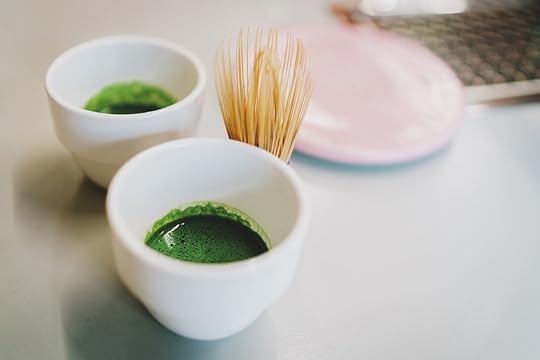
Photo: JKstock/Shutterstock
The centerpiece of the traditional Japanese tea ceremony, matcha is techna green tea leaves that have been ground down to a fine powder. The powder is whisked into hot water rather than steeped. Matcha is likely the first type of green tea to appear in Japan: When the monk Eisai returned from China, he brought back with him not only seeds but also the newfound knowledge of how to prepare powdered green tea. Today, matcha is used all over the world to flavor ice cream, coffee, cakes, smoothies, and even Kit Kat bars.
4. Shincha
Shincha is made from the youngest and most tender leaves from the tea plant. It’s the highest quality green tea, and it’s picked from the first or second flush of the spring harvest season. Many tea producers claim that during the winter months amino acids build up in the leaves, resulting in a sweeter, less bitter taste.
5. Gyokuro

Photo: masrpx/Shutterstock
Gyokuro means “jade dew” in Japanese. It’s the highest grade of green tea in the country, and the most expensive. Introduced to the Uji region of Japan in the mid-17th century, the most important characteristic of gyokuro tea is that it’s shade grown for as many as 30 days before harvest. Like tencha, gyokuro has a higher concentration of theanine and fructose, resulting in a smooth and sweet tea with a rich umami flavor.
6. Bancha
Harvested from the same plants as sencha, bancha is the lowest grade Japanese green tea, on the other end of the spectrum from gyokuro. Bancha is considered lower grade because it’s either harvested later in the season after the first or second flush (harvest) or because the leaves that are picked are lower down on the shoot. There, the leaves tend to be coarse in texture whereas the more delicate leaves near the top of the shoot are considered higher quality. That doesn’t mean that bancha tastes bad. In Japan, it’s considered an everyday tea with an earthy flavor that takes on the color of straw. Another variety of bancha harvested in the Tokushima prefecture, called awabancha, is fermented before it is dried.
7. Hojicha

Photo: /Shutterstock
Hojicha has a few defining characteristics that help it stand out from the Japanese green tea pack: The leaves are roasted after being harvested and steamed. Roasting removes the bitterness, imparting the tea with an earthy, smoky flavor and distinct dark red hue. Hojicha is typically harvested in Kyoto from bancha tea leaves, making it a slightly lower grade than other green teas. Because it’s low in caffeine, it’s often served during an evening meal or before bed.
8. Fukamushi
Fukamushi, produced in Shizuoka prefecture, means “deeply steamed.” Once tea leaves are harvested they are usually steamed from around 30 to 40 seconds — a necessary process called sassei, which halts fermentation and oxidation. However, the sencha or bancha leaves for fukamushi tea are steamed twice as long as usual (about a minute and half) before being dried. The softened leaves retain a sweeter, bolder flavor, and a texture that is sometimes described as “creamy” or “buttery.” The color is a cloudy, dark green, and it needs less time to steep. The softer leaves are also more fragile, often breaking up into particles that can gather as sediment in the bottom of the cup.
9. Genmaicha

Photo: AIVRAD/Shutterstock
What makes genmaicha stand out is that kernels of brown rice are added to the bancha leaves as they dry. Sometimes the kernels pop during this process, earning genmaicha the nickname “popcorn tea.” According to legend, a servant in the 15th century was pouring green tea for a group of warlords and dropped a bag of brown rice into one of the cups, thereby spoiling the expensive beverage. But when the samurai sipped his tea, he found that the roasted rice added an earthy, full-bodied flavor to the bitter green tea. Another theory is that green tea was a luxury only enjoyed by aristocrats in the 15th century, so when ordinary people got their hands on bancha tea (lower grade tea harvested later in the season) they preserved it by adding brown rice to dried leaves.
10. Guricha
Also known as tamaryokucha, this is a rare Japanese green tea. Harvested at first flush, guricha leaves are not steamed after being picked but are pan-fried, a more common technique in Chinese tea production. The leaves form a coiled shape during this process, which also sets it apart from other Japanese green teas. This clear, pale green tea is sometimes described as refreshing or light, and it’s mostly produced on Kyushu Island.
11. Kukicha

Photo: lunamarina/Shutterstock
Kukicha consists of the byproducts of the tea production process: stems and twigs. This tea is mild and nutty in flavor and low in caffeine. Like fukamushi, it’s known for its “creamy” texture. The color of the steeped tea can sometimes be pale orange, similar to hojicha. In Kyoto, kukicha is known as karigane, which means “wild goose,” a reference to the fact that geese rest on branches floating in the sea during their migration periods.
12. Kabusecha
Also known as kabuse, or “covered tea,” this tea is sometimes described as the mid-way point between sencha and gyokuro. Shade-grown for as few as 10 days, kabusecha is sweeter and less grassy in flavor. Kabusecha is rarer than sencha and gyokuro, however, accounting for less than five percent of the green tea grown in Japan. The best kabusecha can be found in the Yame region. 
More like this Coffee + Tea The 5 major tea regions of Asia you need to know about
The post 12 types of Japanese green tea all true tea lovers should know appeared first on Matador Network.

Meghan Markle addresses BLM

In a recent video, Duchess of Sussex Meghan Markle emerged from the Los Angeles hideaway where she’s been living a relatively quiet life with her family, to address the graduating class of 2020 at her alma mater, Immaculate Heart High School.
Markle and her husband recently stirred up what we thought would be the biggest firestorm of 2020 when they left behind the British tabloids, paparazzi, the rest of the royal family, and the Queen herself, and fled to the United States.
Markle used the opportunity to talk about the Black Lives Matter movement in the aftermath of George Floyd’s death at the hands of Minneapolis police officer Derek Chauvin. She called the events that led to the protests and demonstrations taking place in Los Angeles “absolutely devastating,” and admitted that she wasn’t entirely sure what to say in her commencement speech in such a fraught moment. But Markle stepped up to offer words of comfort and encouragement, and voice her support for the movement.
“The only wrong thing to say is to say nothing,” Markle, her voice imbued with the passion familiar to anyone who followed her career as an outspoken advocate for women’s rights. “Because George Floyd’s life mattered and Breonna Taylor’s life mattered and Philando Castile’s life mattered and Tamir Rice’s life mattered. And so did so many other people whose names we know and whose names we do not know.”
Markle went on to share her memories of the 1992 Rodney King riot in Los Angeles, stating that she hoped that by now young people who would think of these protests against racism and police brutality as just a “history lesson, not as your reality.”
“So I’m sorry that in a way we have not gotten the world to the place that you deserve it to be,” she added. Markle then assured them that they would be part of the efforts to rebuild the US.
When the Duke and Duchess announced that they would be stepping down as working members of the royal family, they clearly did not mean they would stop working entirely. Markle’s goal was always to use her newfound platform to advocate for human rights and social justice, but the rules guiding the British royal family stifled a voice she desperately wanted to use. Now that she’s no longer tethered to the family, monetarily or otherwise, Markle is free to speak openly about the issues that are shaping the world.
This video is likely just the beginning of Markle’s reintroduction into the public eye. We can likely expect to hear more from her soon, and we should be thanking the British royal family for letting her and Harry go without a fight. She’s arguably the most famous woman on the planet right now so when she says “George Floyd’s life mattered,” people listen. 
More like this Entertainment All the good Meghan Markle and Prince Harry could do with their newfound freedom
The post Meghan Markle tells students ‘George Floyd’s life mattered’ appeared first on Matador Network.

Yosemite National Park may reopen
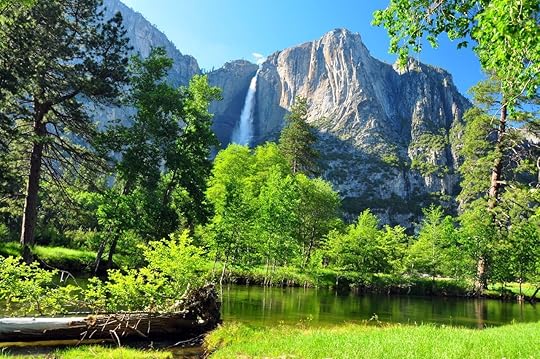
After being closed for over two months due to the COVID-19 pandemic, Yosemite National Park may reopen as soon as June 11. The reopening still hinges on state health officials granting approval for the reopening of campsites and hotels in the surrounding communities, but the leaders of Mariposa, Mono, Tuolumne, and Madera counties have written to Governor Gavin Newsom urging approval.
Scott Gediman, Yosemite spokesperson, said, “We have been doing our best to incrementally increase access to the park. Employees are coming back to work. Everybody is excited. Of course, our paramount concern is the safety of our visitors and employees, but we have everything from physical signs to enhanced cleaning. We are taking as many precautions as possible to prepare for it.”
Friday will mark the first milestone in reopening the park, as visitors with existing wilderness backpacking reservations, and existing reservations to climb Half Dome, will be allowed to enter. However, none of the commercial facilities will be open at this time.
When the park does open, visitor capacity will likely be limited to 50 percent to promote social distancing. The plan drafted by park officials for the reopening also includes:
Reservations for day visitors
Encouraging online advance payment for entry fee to limit contact with park staff
The suspension of the shuttle service in Yosemite Valley
The reopening of The Ahwahnee hotel and Yosemite Valley Lodge at full capacity and Curry Village at half capacity
Reopening of the North Pines and Lower Pines campgrounds
These reopenings and measures, however, will first have to be approved by public health officials. Currently, there are no set dates for the official reopening of the park. 
More like this Parks + Wilderness The best thing about each of California’s 9 national parks
The post Yosemite National Park may reopen next week at 50 percent capacity appeared first on Matador Network.

What is a pump track
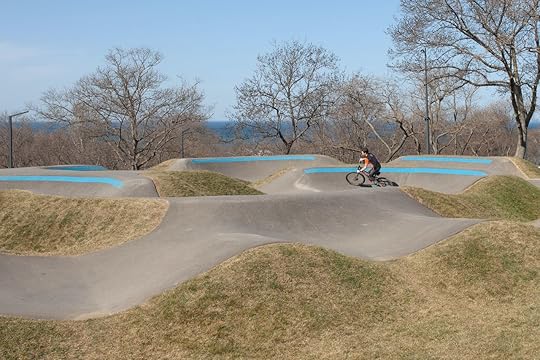
If you ever played the video game Excitebike as a kid, picture a never-ending run through your favorite course. If that course were real, it might resemble a pump track, a type of action sports practice facility increasingly common in the United States and around the world. Sometimes called a skills course, the pump track evolved out of traditional BMX courses and made the concept accessible to other sports, including mountain biking and skateboarding.
In a BMX course, the rider begins on top of a “drop-in” — a hill or incline where they can gain initial speed — and proceeds across a set of obstacles toward a finish line. The pump track closed the course into a loop. Here we cover a variety of pump track styles and formats, providing a basic idea of what to expect at each and helping you identify a format that works for you.
What exactly is a pump track?
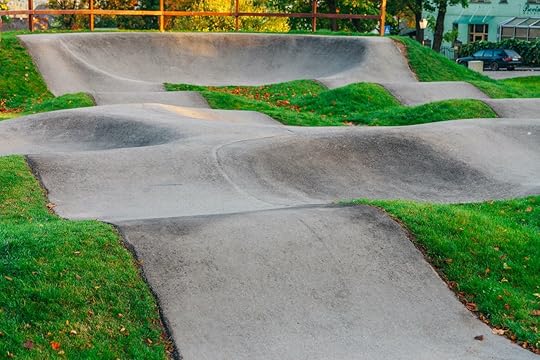
Photo: Aleksandrs Muiznieks/Shutterstock
A pump track is a closed-loop practice track consisting of berms, jumps, rollers, and quarter-pipes, usually connected by banked turns. The rider “pumps” their way through in a continuous loop for as long as they wish, without having to pedal, skate, or throttle after dropping in. The “pump” itself signifies the rider’s ability to harness the momentum gained from crossing each of the park’s features, which is how they make it through without additional manual effort.
Tracks are generally designed for one specific action sport, often mountain biking, BMX, or skateboarding. Skateboard-specific pump tracks are typically made of concrete or asphalt and are found at, or in place of, traditional skateparks. Pump tracks built for bikers are typically made of dirt. You’ll often find them near mountain bike trailheads and at designated bike parks.
Riding a pump track is a great way to practice your sport because it allows you to slowly progress your movement and style as you gain confidence on the features. The tracks are designed for riders to flow through the course at a consistent speed, slowly getting faster as they get better.
How can I find a pump track near me?

Photo: RimDream/Shutterstock
The top resource for finding pump tracks is Pumptrack. The website has a regularly updated map of courses all over the world, and since it’s far from complete, users can register tracks they find that aren’t listed to help the effort. World of BMX has a thorough index of tracks, but many are not registered or listed much beyond the websites of Parks and Recreation departments, if at all. Some diehard riders build them in their backyards, while others work with officials where they live to build tracks in open spaces or parks. These often become well-known in their community but can be hard to locate or even hear about. Therefore, a good way to find one near you, or near to where you are traveling, is to stop into a local bike shop or Google “pump track in (place name).”
The best pump tracks in the United States
Velosolutions Pump Track — multiple locations around the US
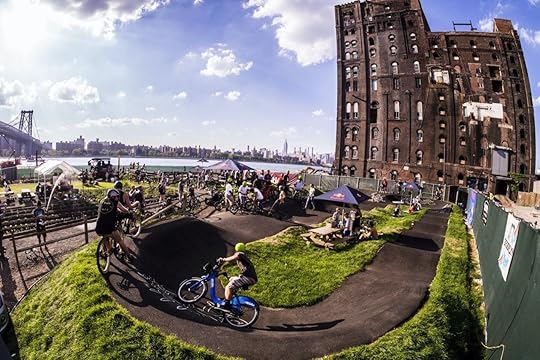
Photo: Velosolutions
Velosolutions builds pump tracks around the world, including many in the US: New York City; Oklahoma City; Broomfield, Colorado; and Leavenworth, Washington, among others. The track in Williamsburg, Brooklyn, is a fine example of how versatile Vesolutions’ work is. Its tracks are made of asphalt, which makes them accessible to skateboarders and scooter riders, but you’ll also see plenty of bikers pushing their way through. The tracks feature multiple lines riders can choose from, including lines with smaller features for kids and beginners. Once on the advanced section, riders can choose to flow the entire course or ride around features they aren’t comfortable with yet. The only downside of the New York track is distraction — the track offers an incredible view of the Manhattan skyline across the water.
Ray’s Indoor Bike Park — Cleveland, Ohio
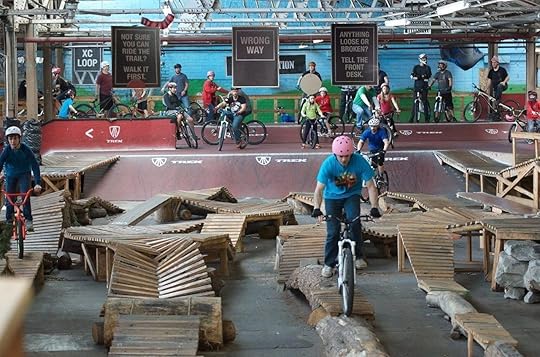
Photo: Ray’s Indoor Bike Park/Facebook
Most pump tracks are outdoors, but Ray’s Indoor Bike Park in Cleveland brings the concept inside, making it accessible during the Midwest’s often brutal winters. It’s huge. The park operates in a massive warehouse and is broken down into multiple sections and runs, including a beginner’s area, a jumps area, and a few specialty areas for different styles of biking like cross-country and supersport. Many are intertwined via connector trails, so covering the entire facility is doable for advanced-level riders. It’s an ideal place to both practice the style you’re good at and to gain ability in other styles in a casual setting — so much so that the park has become a “destination” for bikers across the country. Because this is a maintained indoor facility, it’s not free — a day pass starts at $23 and a season pass is available for $378. Kids under 18 must have a parent with them to sign a waiver. The park is open from October to April.
Truckee Bike Park — Truckee, California

Photo: Truckee Bike Park/Facebook
Truckee Bike Park takes the “pump” concept and diversifies it to include multiple tracks which each offer a unique experience. The three “flow lines” are broken down into a beginner, intermediate, and advanced line in which the rider drops in and progresses over a series of berms and jumps. The rider can loop around to do the same track again, or continue on to the next one if feeling confident. The Dual Pump track is a side-by-side trail that provides two options for riders to pump alongside a friend over berms and jumps. The Straight Rhythm track is similar, but instead of looping around, it’s a start-to-finish ride.
Griffin Bike Park — Terre Haute, Indiana

Photo: Griffin Bike Park/Facebook
Spread across 300 acres, Griffin Bike Park is a hub of bicycle and pump culture in the midwest. More than two dozen lines are available for riders of all levels, but it’s the pro-level tracks that make this a destination park. The skills park features beginner tracks as well as the all-ability Basic Training Skills Loop that pushes riders through berms and hips over the course of one mile. Some pedaling is involved, but with properly harnessed speed the trail is primarily a cruiser. The Mega Pump is the expert-level, 0.6-mile extreme pump trail with three big jumps and steep descents.
Piney Mountain Bike Lounge — Greenville, South Carolina
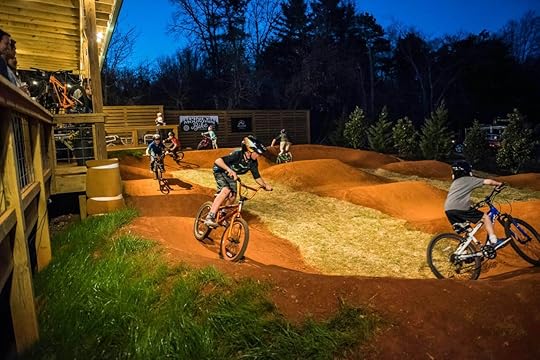
Photo: Piney Mountain Bike Lounge
To perfectly hone the practice of pumping, there’s nowhere better than Piney Mountain Bike Lounge. The track is mellow and perfectly suited to cruising, pedal-free, across the plenty of ollers and berms. Lights keep the track open after dark, provided that the facility is open, and staff is on site (and probably out on the track) to provide tips and tricks of the trade. Plus, a visit to Piney is a full-service experience — it has beer and food trucks on site. 
More like this Cycling Sacramento is NorCal’s booming new mountain bike hub
The post Amp up your biking skills at the best pump tracks in the US appeared first on Matador Network.

Matador Network's Blog
- Matador Network's profile
- 6 followers



